The logs were burning fiercely, the temperature gauge had passed 100C and the small black wrought iron stove in the corner of the guesthouse was threatening to blow.
The temperature hit 110C: why was the hot water in the fireplace not being pumped into the tank?
I blinked and it was 120C: connecting a water-heating wood fire into the radiator system had been my idea – a winter alternative for when the solar wasn’t working – but it had been professionally installed.
Then it was suddenly 130C – that was quick – I started pressing buttons on the heating system controller and wondering at what point it was going to explode.
It was like the Crystal Maze – the clock was ticking, the pressure in the metal box was increasing and I was desperately trying to defuse what was actually becoming a bomb.
The last temperature I remember seeing was 142C.
I hit the system off button and there was a gurgling sound which was good, and then a deep rumbling sound which was bad. That’s when it exploded.
The same system had been working like a dream in our house for more than a week – the warm fuzzy glow didn’t just come from the roaring fires, but from the knowledge we were also heating up our hot water with wood from our land.
A whole new world of gas-free radiator heat and hot showers had been confidently guaranteed...for when the rain we desperately need finally arrives and the sun goes in for a few weeks.
The red skies in the morning are an off-gridder’s warning (as they say) and I’ve been clearing space for all the logs that have baked in the sun since Lionel cut the eucalyptus forest down in the spring.
I mean everyone else had done that by October – when it’s supposed to rain – so at least I have one last chance to get our winter fuel under cover.
So when our friends Laura and Richard arrived from LA to spend a couple of days staying with us en route to the UK it seemed the perfect chance to fire up the new system.
Laura Hertzfeld was also a fellow at the Stanford (JSK) journalism fellowship and is an expert in virtual, augmented and mixed reality.
It’s at the fascinating front edge of storytelling technology using a smartphone, a headset or some pretty nifty glasses and will be the next big thing to take over our lives.
I’ve done a little virtual reality film making, but Laura’s been meddling in the metaverse since long before it was called the metaverse.
The actual reality was the guesthouse was chilly and even with the gas heater firing, the radiators weren’t augmenting anything terribly well.
I piled up the logs in the fireplace in the next door apartment, lit the fuse and waited for the magic to happen.
I even suggested they pop over and enjoy the flames while I swanned off down the hill to join Ana for a festive beverage at our neighbour Daniel’s house.
But something made me linger longer just to make sure everything was OK...and of course it wasn’t.
I was genuinely starting to panic when I saw the number 142, aware from basic physics that uncontrollable increasing pressure and a sealed metal box are not a good combination.
The blast brought Laura running from next door.
The room filled with clouds of steam – not just from water, but from vapourised anti-freeze which for some reason had been in the radiator system – a mixed reality which was now gassing me.
“I don’t think you should be breathing that in,” shouted Laura as I rushed for any kind of bucket to throw cold water on the fire, and attempted a “nothing to see here, everything’s fine” demeanour.
When the steam stopped pumping the flooding began and I whipped back the rug as a black sludge of water and radiator gunk started to fill up the room.
Thankfully the pressure had blown a pipe off the back of the boiler before things had become too serious: at least there was no shrapnel.
Some beers in Portugal are comically small. The 20cl ones are good for three things: one big gulp, not to get warm in summer and to make your hands look big.
Daniel had stocked up, and after the first few gulps I told the story and started coughing.
Ana googled “anti-freeze ingestion” and Daniel suggested deep exhaling. My wheezing scared Simon and Garfunkel...and my wife...but it could have been worse.
“What’s the worst thing that could happen?” I often ask. “Pretty much everything,” is the answer.
Some hair-brained schemes end with explosions and self-medication, but others work out a lot better.
The work on the lake falls into the latter category and this week Carlos left the battlefield victoriously trundling up the hill astride his mini-digger, two and a half months after he arrived.
We now have a much-improved small reservoir with a water-harvesting road around its circumference to collect all that rain...if it ever comes.
That’s where we will combine salty borehole water with rainwater runoff and provide our guests with drinking water in the toilets and the showers.
It’s one of those weird regulations – up there with the obligatory gas connection and fibre cable to nowhere which we have to install as part of our building project.
We’re “off the grid” – the clue is in the title – but the engineering and building lobbies in Portugal are strong and I fear we might struggle to get an exception from the local town hall.
Back to hair-brained schemes, the jury is still out on the new barbecue area which took me back into the concrete mixing business this week.
The intention was to kill two birds with one stone: create a concrete outdoor kitchen and use up as much of the sand, cement and stones which have been celebrating their one year anniversary in front of the house by sprouting plants.
We were introduced to Ian through a friend and he offered to stay with us for a few days and help out.
Tiles were cut, old concrete was chiselled out, bricks were laid, plaster was applied and wooden formwork was created with some YouTube guidance.
He wasn’t blessed with the best of labourers, but I did what I could with a wheelbarrow and a Dutch hoe, and we now have three extremely heavy concrete worktops slowly hardening on the patio.
We’ve decided to leave it a week for the total concrete tempering experience and then lure some strong people to a “Christmas drink” and spring the heavy lifting on them before they get through too much “glögg” mulled wine.
It’s been an eventful week and with the ever-helpful Guido dropping by to repair the wood fireplace pipes and bleed all that air out of the system – the root cause of the explosion – we’re back to confidently, if carefully, creating warmth whilst also heating water.

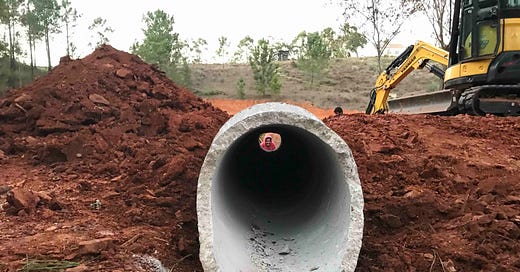


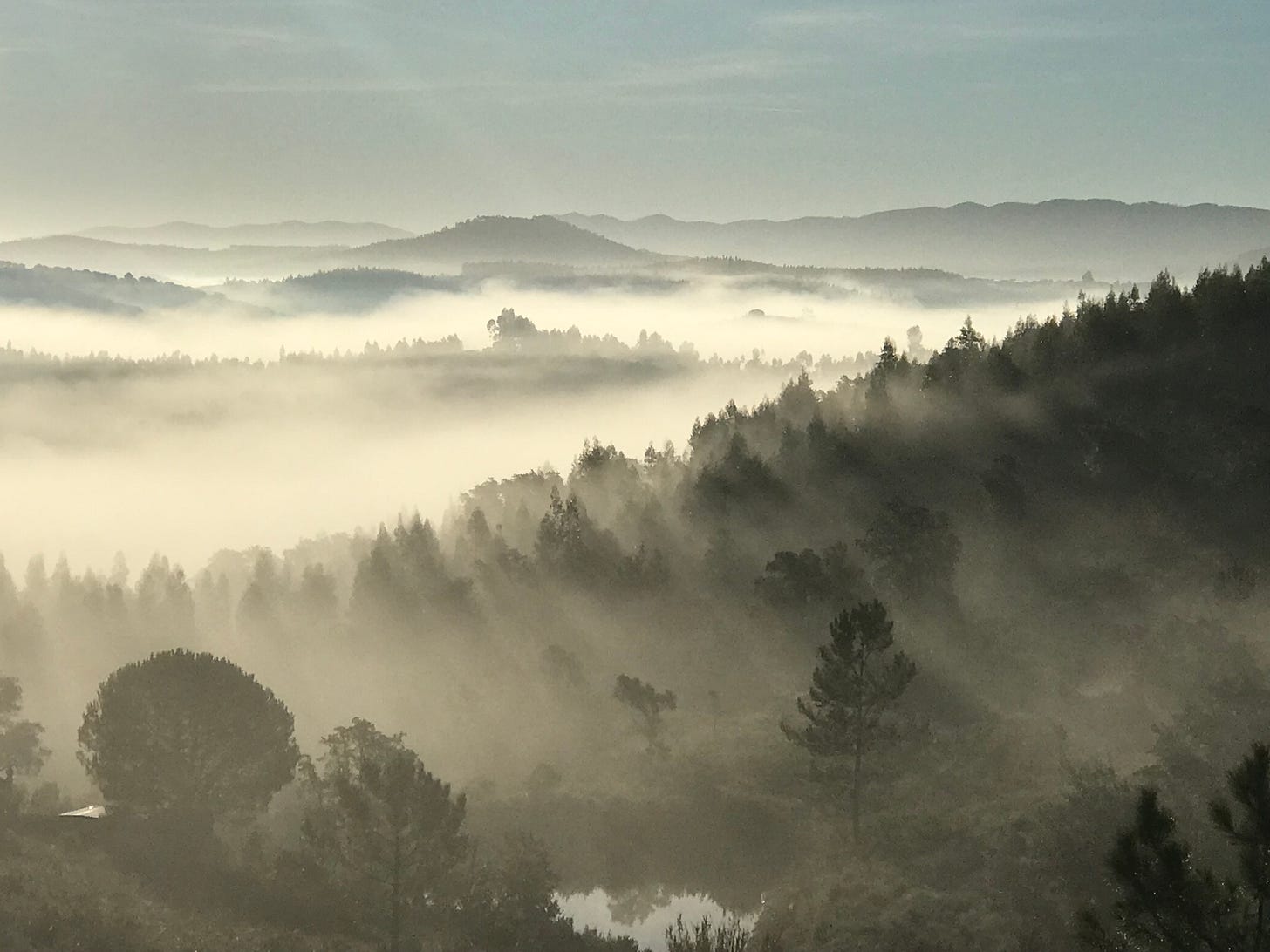
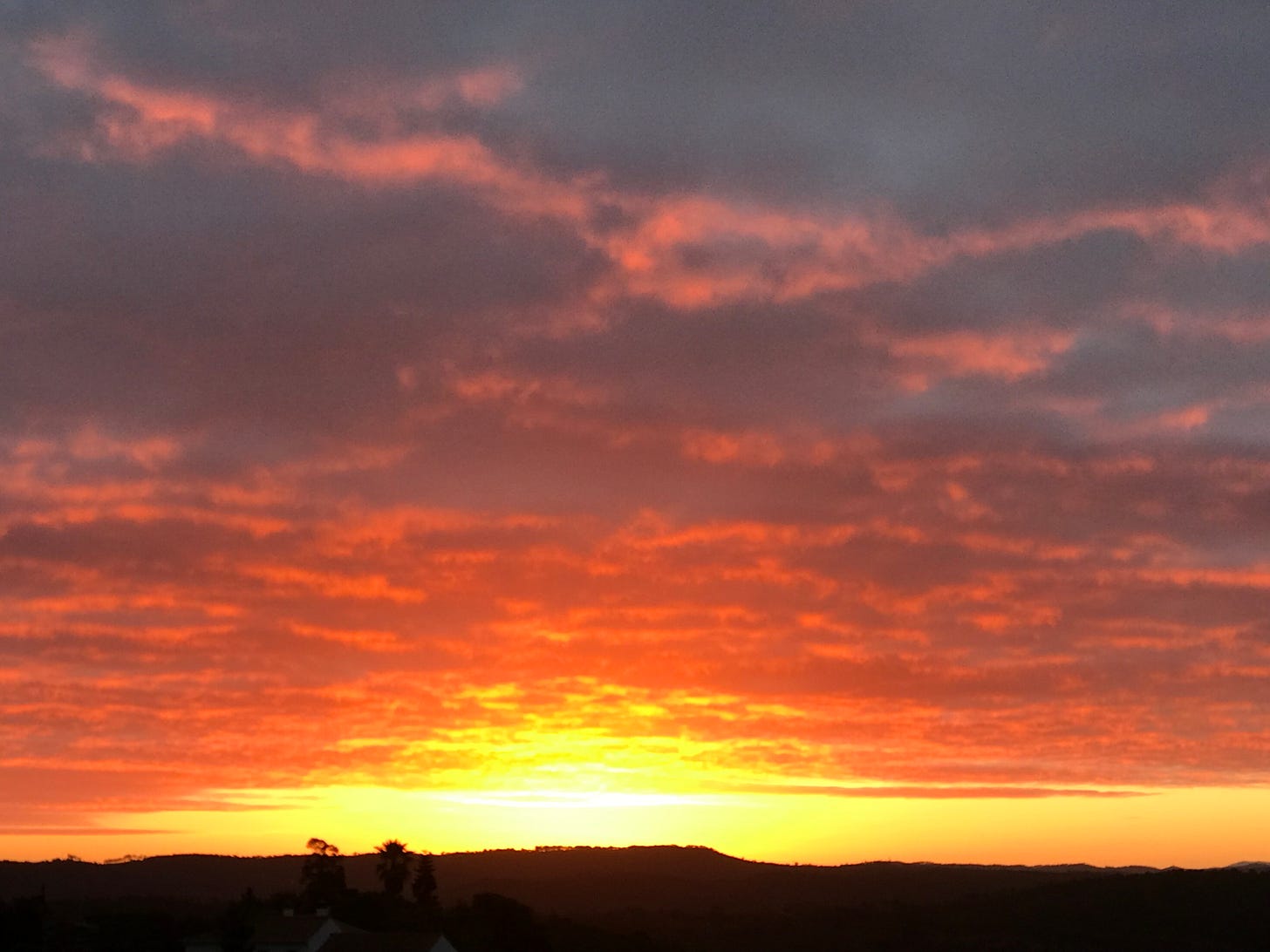
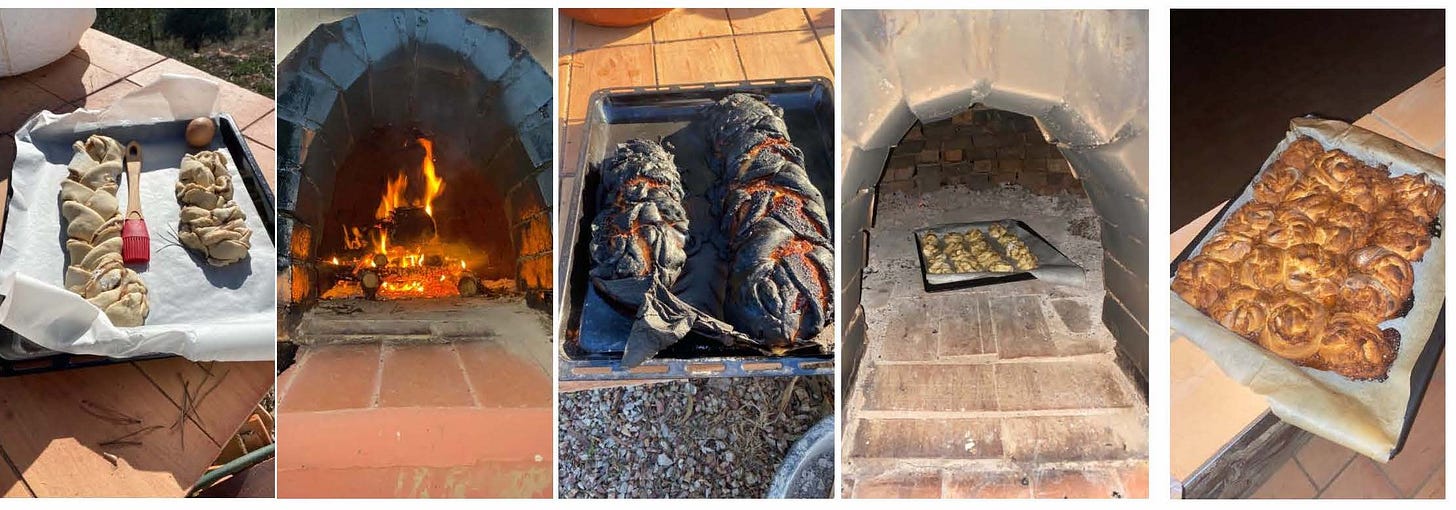
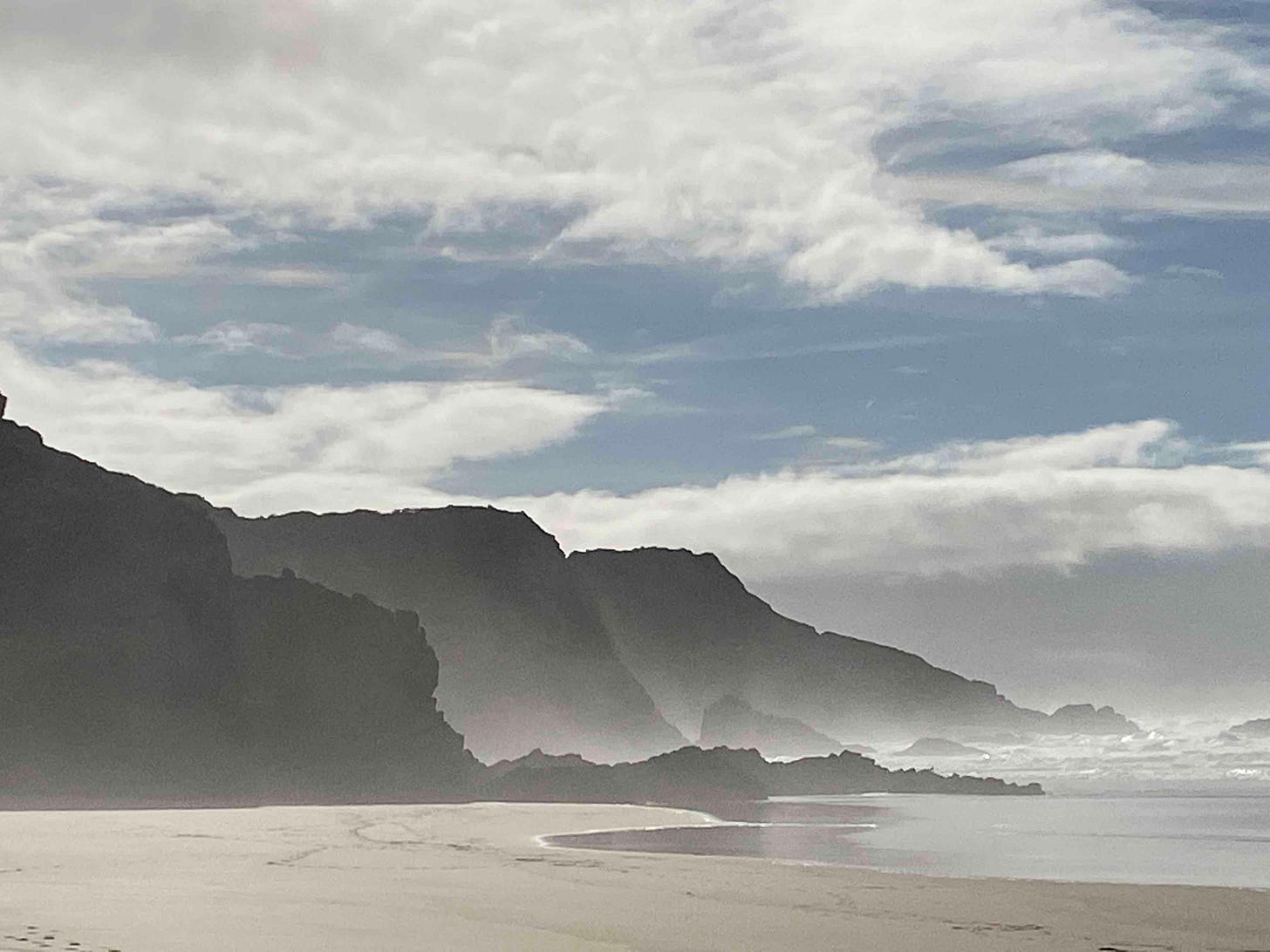
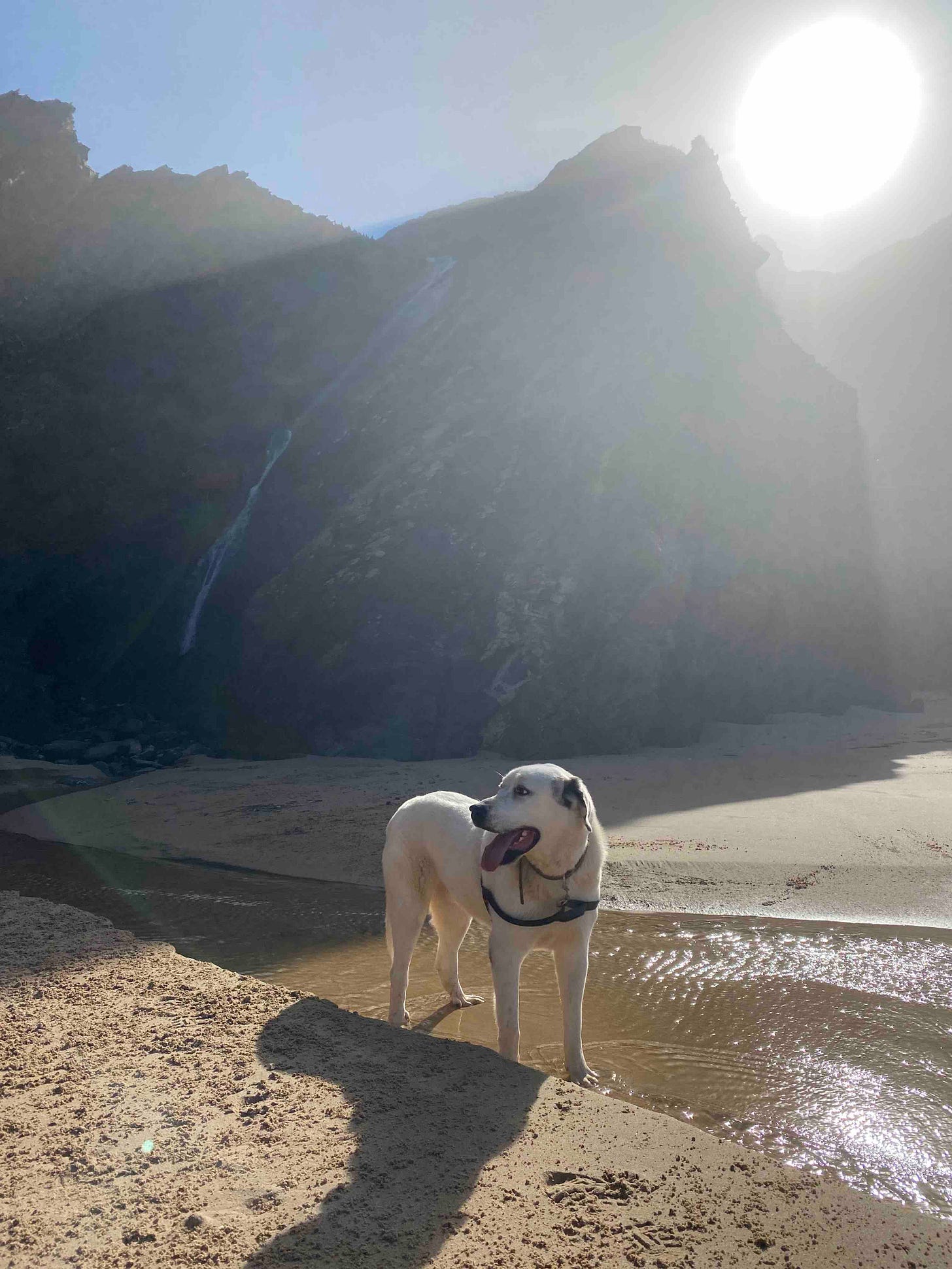
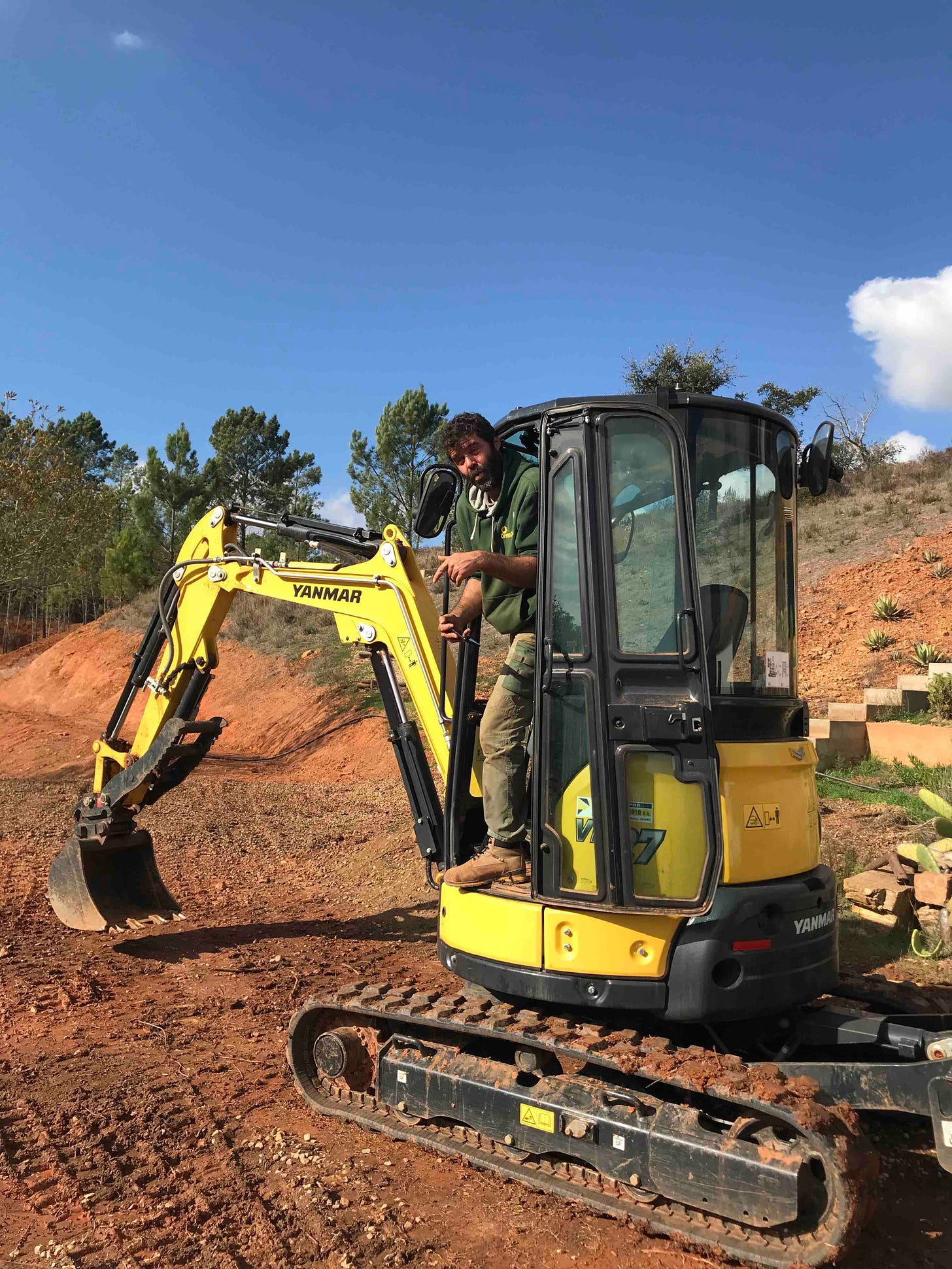
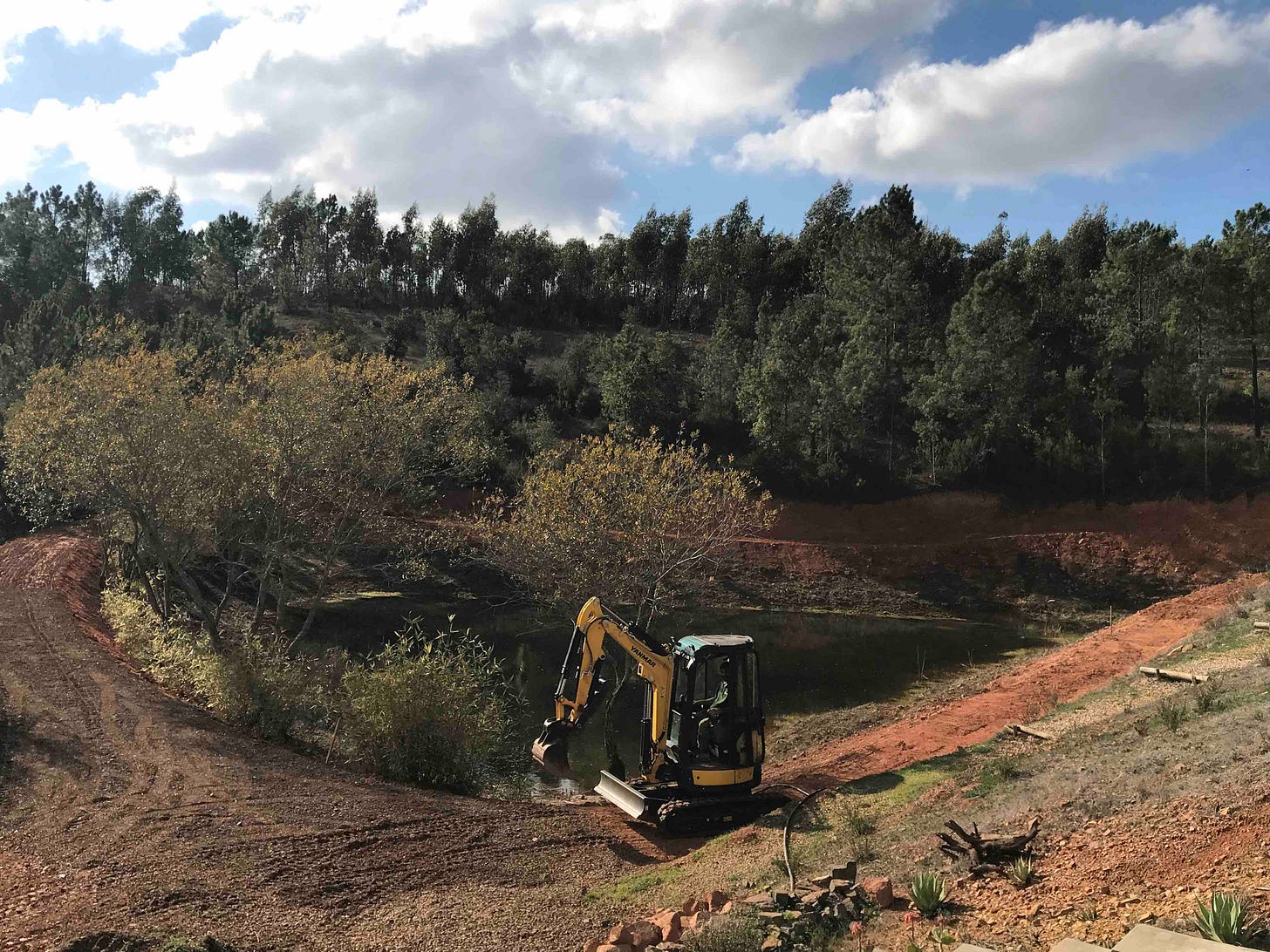


Hi Alistair, read your tale of wood burner / hot water chaos and smiled. We HAD exactly the same problem here in Odeceixe on our wood burner heating system, which was also professionally installed and which kept boiling over. Luckily it never exploded but we had a few near misses. The chaps here could not identify the problem so, we took matters into our own hands and tinkered. More by luck than any skill we worked it out. If your system is similar to ours, there will be a "heat sensor" slipped into the pipe insulation on the outlet pipe at near the top of the boiler. The problem is simple in that, this sensor is always fitted too far away from the top of the water outlet pipe. The sensor does not therefore tell the pumps that the temperature is quickly rising and need to turn on or, for that matter go faster as the heat increases. So we moved the sensor virtually to the top of the outlet and cable tied it in place, with some additional pipe insultation (photos available on request!). If you also want to save money, we fitted a Grundfos Alpha 2 Adapta Flow pump (about EUR250) which is very clever and to learns your system requirements and which most importantly, significantly reduces your electricity bill. Good luck in all. Andrew and Jody Church
I love the idea of the wood heated hot water system. I hope you are able to get it fixed and worked out. We've been dealing with figuring out our hot water system which runs on boring old propane but apparently has special needs in high altitude. Took the best hot shower ever in our house since moving in a year and a half ago. These things take time, I guess.